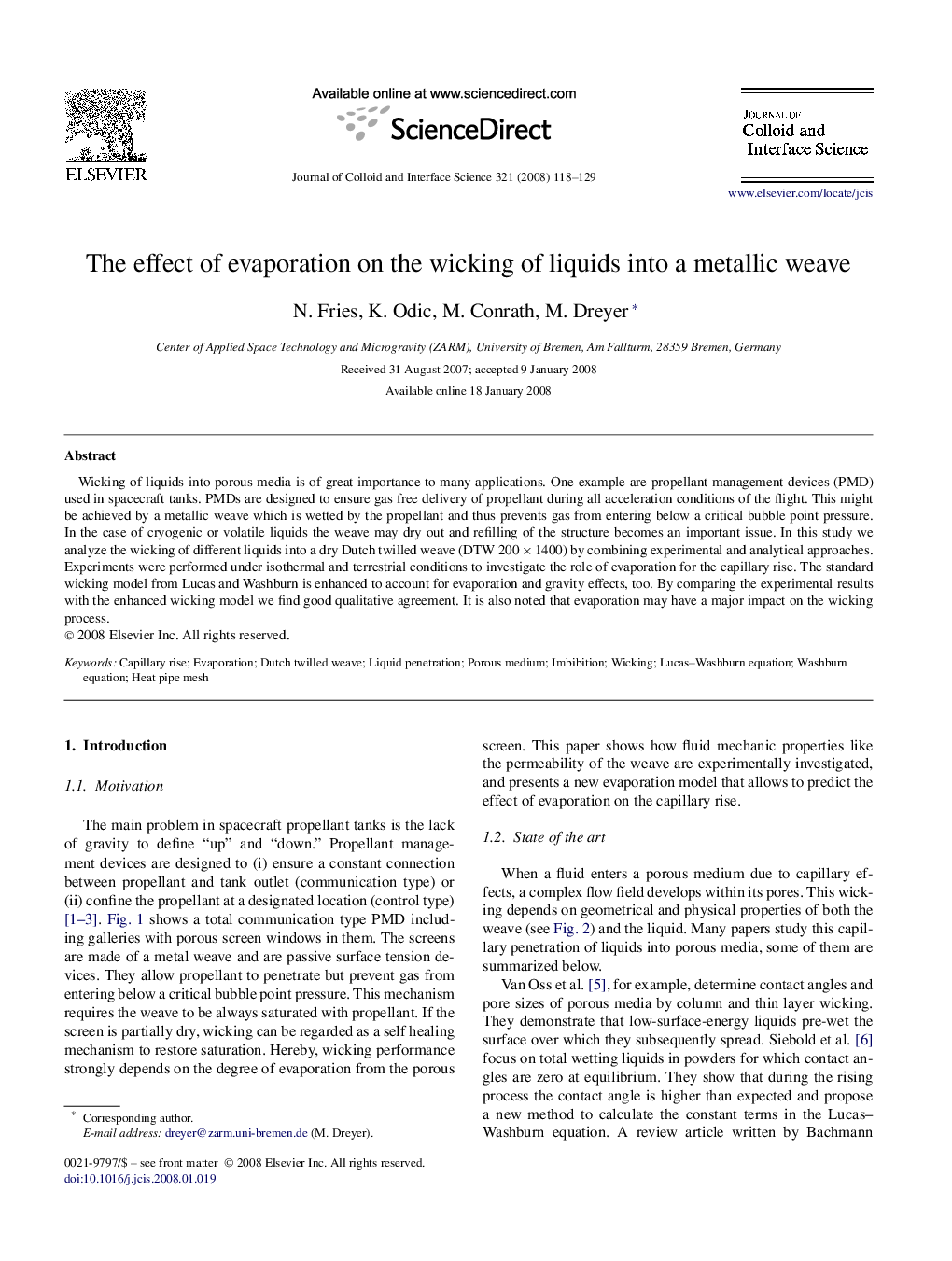| Article ID | Journal | Published Year | Pages | File Type |
|---|---|---|---|---|
| 611200 | Journal of Colloid and Interface Science | 2008 | 12 Pages |
Wicking of liquids into porous media is of great importance to many applications. One example are propellant management devices (PMD) used in spacecraft tanks. PMDs are designed to ensure gas free delivery of propellant during all acceleration conditions of the flight. This might be achieved by a metallic weave which is wetted by the propellant and thus prevents gas from entering below a critical bubble point pressure. In the case of cryogenic or volatile liquids the weave may dry out and refilling of the structure becomes an important issue. In this study we analyze the wicking of different liquids into a dry Dutch twilled weave (DTW 200×1400200×1400) by combining experimental and analytical approaches. Experiments were performed under isothermal and terrestrial conditions to investigate the role of evaporation for the capillary rise. The standard wicking model from Lucas and Washburn is enhanced to account for evaporation and gravity effects, too. By comparing the experimental results with the enhanced wicking model we find good qualitative agreement. It is also noted that evaporation may have a major impact on the wicking process.
Graphical abstractAn experimental investigation and a comparison with an analytic model.Figure optionsDownload full-size imageDownload high-quality image (44 K)Download as PowerPoint slide
